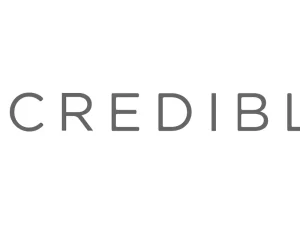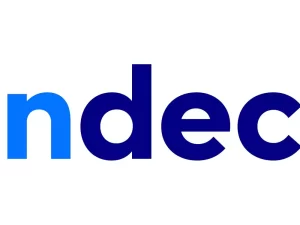The various types of student loans available is essential for borrowers to make informed decisions about their financial future. This comprehensive article aims to explore the different types of student loans, including federal loans, private loans, and alternative funding options. By examining the features, benefits, and considerations associated with each loan type, borrowers can navigate the landscape of student loans and choose the financing options that best suit their needs.
1. Federal Student Loans:
Federal student loans are backed by the U.S. Department of Education and offer several advantages over private loans, including fixed interest rates, flexible repayment options, and potential loan forgiveness programs. Here are the primary types of federal student loans:
1.1 Direct Subsidized Loans:
Direct Subsidized Loans are available to undergraduate students with demonstrated financial need. The government pays the interest on these loans while the borrower is enrolled in school at least half-time, during the grace period, and deferment periods. This feature can save borrowers money on interest costs during their education and the initial repayment period. The maximum loan amount is determined by the borrower’s year in school and other financial factors.
1.2 Direct Unsubsidized Loans:
Direct Unsubsidized Loans are available to undergraduate and graduate students regardless of financial need. Unlike subsidized loans, borrowers are responsible for paying all the interest on these loans, which begins accruing from the time of disbursement. While interest accrues during all periods, borrowers have the option to defer interest payments until after graduation or capitalize the interest, adding it to the loan principal. The maximum loan amount is determined by the borrower’s year in school and other factors, including dependency status.
1.3 Direct PLUS Loans:
Direct PLUS Loans are available to graduate students and parents of dependent undergraduate students. These loans require a credit check and have higher interest rates compared to other federal loans. Direct PLUS Loans provide a way to bridge the gap between the cost of education and other financial aid sources, but they come with eligibility criteria and creditworthiness requirements. The maximum loan amount is determined by the cost of attendance minus other financial aid received.
1.4 Perkins Loans:
Perkins Loans are low-interest loans available to undergraduate and graduate students with exceptional financial need. These loans are administered by participating colleges and universities. Perkins Loans offer favorable terms and conditions, including a fixed interest rate, generous grace period, and various forgiveness and cancellation options. The maximum loan amount varies based on financial need and the availability of funds at the institution.
1.5 Federal Loan Repayment Options:
Federal student loans offer various repayment options to accommodate different financial situations:
- Standard Repayment: Borrowers make fixed monthly payments over a 10-year term.
- Graduated Repayment: Payments start low and increase every two years over a 10-year term.
- Extended Repayment: Borrowers can extend the repayment term up to 25 years, reducing the monthly payment amount.
- Income-Driven Repayment (IDR) Plans: These plans tie monthly payments to a percentage of the borrower’s discretionary income and family size. Examples include Income-Based Repayment (IBR), Pay As You Earn (PAYE), Revised Pay As You Earn (REPAYE), and Income-Contingent Repayment (ICR) plans. These plans can be beneficial for borrowers with limited income or high loan balances.
- Public Service Loan Forgiveness (PSLF): Borrowers who work in qualifying public service or non-profit organizations may be eligible for loan forgiveness after making 120 qualifying payments while working full-time.
2. Private Student Loans:
Private student loans are offered by banks, credit unions, and other financial institutions. While they lack some of the borrower protections and benefits associated with federal loans, private loans can be a viable option for students who have maximized their federal loan eligibility or need additional funding. Key features of private student loans include:
2.1 Interest Rates and Terms:
Interest rates on private loans may be fixed or variable and are based on the borrower’s creditworthiness and the prevailing market rates. Private loan interest rates can vary significantly among lenders, and borrowers with excellent credit may qualify for lower rates. Loan terms, including repayment periods and deferment options, are set by individual lenders and may vary based on the borrower’s financial circumstances.
2.2 Credit Requirements:
Private loans often require a credit check, and borrowers with a good credit history may qualify for lower interest rates. Students with limited credit or no credit history may need a co-signer, such as a parent or guardian, to secure a private loan. Having a co-signer with a strong credit profile can improve the chances of loan approval and potentially lead to better loan terms.
2.3 Repayment Options:
Private loans typically offer various repayment plans, allowing borrowers to choose an option that aligns with their financial goals and repayment abilities. Some lenders may offer flexible repayment options, such as interest-only payments while in school or deferred payments until after graduation. It is crucial to review and understand the terms and conditions of private loans, including repayment obligations and any potential fees or penalties.
2.4 Private Loan Benefits:
Private loans can provide borrowers with additional funding options when federal aid is not sufficient to cover educational expenses. Private loans may have higher borrowing limits compared to federal loans, allowing students to bridge the gap between the cost of attendance and other financial resources. Additionally, private loans often have a streamlined application process and faster disbursement of funds, providing quick access to funds for educational purposes.
3. Alternative Funding Options:
In addition to federal and private student loans, several alternative funding options can help students finance their education. These options may include:
3.1 State and Institutional Loans:
Some states and colleges offer loan programs specifically tailored to residents or students attending participating institutions. These loans often come with specific eligibility criteria, interest rates, and repayment terms that vary by program. State and institutional loans can supplement federal and private loans to meet the remaining financial needs.
3.2 Scholarships and Grants:
Scholarships and grants are forms of financial aid that do not require repayment. They are awarded based on various criteria, such as academic achievement, athletic abilities, or specific demographic characteristics. Students should actively search for scholarships and grants from government agencies, private organizations, and educational institutions to supplement their funding needs. Numerous online resources and scholarship search engines are available to help students find applicable scholarships.
3.3 Work-Study Programs:
Work-study programs provide part-time employment opportunities for students to earn money to contribute to their educational expenses. These programs typically offer jobs on or off-campus, and the earnings can be used to cover tuition fees, books, and living expenses. Work-study programs not only provide financial support but also offer valuable work experience and networking opportunities.
3.4 Crowdfunding and Peer-to-Peer Lending:
Crowdfunding platforms and peer-to-peer lending websites have emerged as alternative methods of funding education. These platforms allow students to seek funding from individual donors or investors who are interested in supporting their education. Students can create campaigns or profiles, sharing their educational goals and financial needs, to attract potential funders. Crowdfunding and peer-to-peer lending can be effective tools for raising funds, especially for unique educational pursuits or projects.
Conclusion:
Understanding the different types of student loans is crucial for students and their families when planning for higher education. Federal loans offer numerous benefits such as fixed interest rates, flexible repayment options, and potential loan forgiveness programs. Private loans can be an alternative when federal aid is insufficient or when specific circumstances warrant considering private financing options. Exploring alternative funding options, such as scholarships, grants, work-study programs, and crowdfunding, can further supplement the financing needs. It is important to thoroughly research and compare loan options, considering factors such as interest rates, repayment terms, eligibility criteria, borrower protections, and the overall cost of borrowing. By doing so, borrowers can make informed decisions and select the most suitable financing options to pursue their educational goals while managing their debt responsibly. Remember, responsible borrowing and financial planning are key to successfully navigating the world of student loans and achieving academic and financial success.










